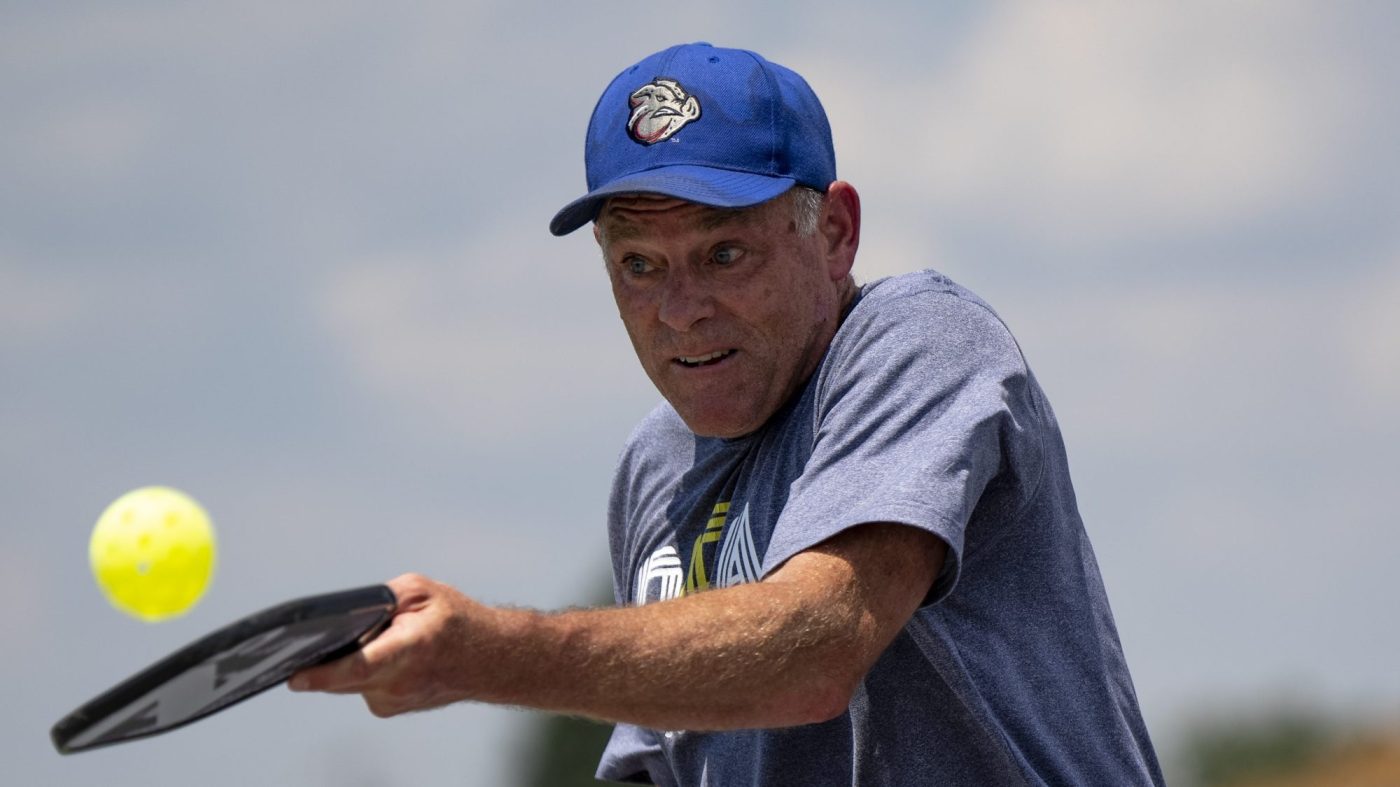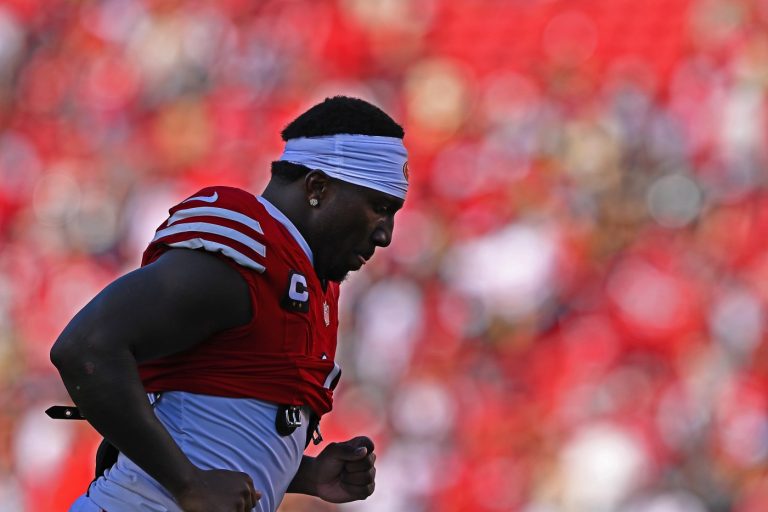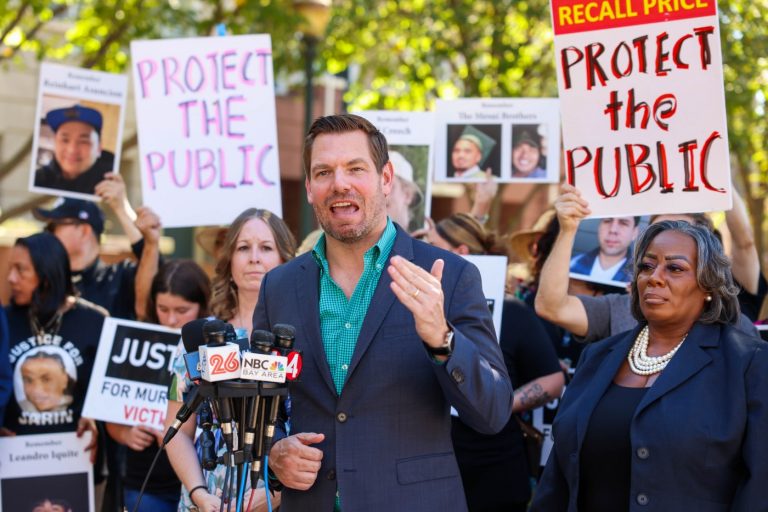When Eric Royse agreed to fill in at his wife’s pickleball league, he didn’t expect it would end with him needing surgery and months of physical therapy
Royse, 49, of Bethlehem, Pennsylvania, has been active much of his life: He played college basketball and as an adult he’s been a runner, even doing some marathons. So when his wife got into the paddle sport and then got him to play several casual matches, he didn’t think it was anything his current level of fitness couldn’t keep up with.
“It’s an enjoyable and addicting sport. My 75-year-old mother plays,” Royse said. “I thought it was a little bit goofy from the beginning. It’s like a driveway game, and in some ways it is but in all the good ways.”
But in early August, Royse’s wife asked him to fill in for a league game. Suddenly, his perception of what he’d viewed as just a fun, casual game changed.
“I neglected to think of it as a sport,” Royse said. “I thought I could show up after my third or fourth time playing and now go play it at a really high intensity with folks that really know how to play. I approached it like my kid asking to go play kick the ball in the yard. Next thing you know, I’m playing high-intensity pickleball and I blew my knee out.”
Pickleball, which combines elements of badminton, tennis and ping pong, is the fastest-growing sport in the United States. Last year more than 36 million people played the game, and it is particularly popular among adults 40 and up. It’s helped get people active and exercising as well as helped already active adults stay active. But it’s also a growing reason for sports medicine injuries and orthopedic injuries: It’s estimated there were 67,000 emergency room visits and 9,000 outpatient surgeries related to pickleball injuries in the U.S. last year, according to an analysis by UBS Asset Management.
“I’ve just been really shocked by the number of mostly soft tissue injuries, not necessarily always surgical … the number of people not only playing but the number of people coming in injured seems to be rising exponentially over the last six months,” said Dr. Wayne Luchetti, associate chief of orthopedic surgery at Lehigh Valley Health Network’s Lehigh Valley Orthopedic Institute in Pennsylvania.
Luchetti himself is a pickleball enthusiast and tries to play two or three times a week.
“It’s a different kind of workout for me. I’m a Peloton guy. A lot of days I dread getting on the Peloton for 45 minutes. It’s just mentally hard to do, but I never dread going to play pickleball for an hour and a half because it’s just a fun way to burn calories,” Luchetti said.
He’s also injured himself while playing pickleball, pulling his calf muscle about three weeks after he took up the sport.
The common injuries are to the feet, ankles and knees, with many due to overuse and strain.
Luchetti said he believes there are three main reasons why so many people are getting injured: One, that there are just so many people playing it; two, it involves a lot of side-to-side movement, which can be hard on the knees and ankles; and three, a lot of the people playing are older adults.
He said he sees people of all ages with pickleball injuries but most are in their 60s and 70s.
“You have a lot of older athletes that haven’t necessarily played a sport in 20 years, now they’re addicted to this fun sport,” Luchetti said. “They’re going out two to three days a week and firing muscles they haven’t fired in 20 years. Sometimes they don’t know their limitations.”
Pickleball courts are seen Thursday, Jan. 11, 2024, at St. Luke’s Sportsplex in South Whitehall Township. Pickleball is the fastest growing sport in the United States. It’s estimated there were 67,000 emergency room visits and 9,000 outpatient surgeries related to pickleball injuries in the U.S. last year.(April Gamiz/The Morning Call)
How to avoid pickleball injuries
St. Luke’s University Health Network recently opened the St. Luke’s SportsPlex, which is also home to Pickleball Lehigh Valley. John Hauth, St. Luke’s senior administrator for sports medicine relationships, said the SportsPlex has instructors, classes and courses available to help pickleball players avoid injury.
“A hallmark of the program there is offering both quality instruction in pickleball specifically, but also in how to prepare and become stronger, more well balanced as you begin to play the game of pickleball,” Hauth said. “People that haven’t exercised for a long period of time may be deconditioned. They need to start the right way and that’s something we’re emphasizing.”
Luchetti also said strength and conditioning work is crucial to avoiding injury. He sometimes tells his patients who are really serious about playing to see a physical therapist for one session before they play again so they can get advice on what muscle groups they need to strengthen to avoid injuries.
Luchetti added proper footwear is key; shoes worn to play pickleball should fit well and grip the court.
“I see a lot of people slipping and turning their ankle or their knee,” Luchetti said.
And people with joint problems should make sure to wear a brace while playing.
Luchetti also said muscles, tendons and ligaments get tighter as people age and that makes them more prone to injury; to avoid that, stretching before playing is key.
Luchetti’s pickleball injury was partly caused by him not stretching, but now he stretches for 20 to 30 minutes before he steps on the court. Dynamic stretching such as doing hip circles or high stepping is ideal to limber up.
He added that while getting exercise is important, so is giving the body time to rest. Instead of playing the game multiple days in a row back to back, consider spacing out when you play so you get at least one rest day between game days.
And if you feel like something is off or feel pain while you play, stop — don’t play through the injury. If you suffer an injury while playing, immediately stop and rest, apply ice, compress the injury and make sure it is elevated, then seek care as soon as possible.
Hauth said while it’s important to do what you can to prevent injuries, fear of injury or another injury shouldn’t keep people away from the sport.
“People are active because they’re engaged in pickleball. People are moving, which is good for their overall health,” Hauth said.
Royse said he feels the same way. While he has regained the ability to ride a bike, he hasn’t made it back onto the pickleball court, nor has he been able to start running again. But he’s working toward that point. He will be back on the court.
“I’m a former athlete, I’m in pretty good shape and it happened to me so it can definitely happen,” he said. “But I chalk it up to it’s like skiing. A lot of people get injured skiing, but it doesn’t hold you back. You just got to know your limitations, know your craft and take it seriously, but it’s definitely worth it.”
“I assume that this summer when I can go play pickleball, with proper stretching and preparation, I would totally go play and play hard. I don’t want to be fearful in life.”













+ There are no comments
Add yours